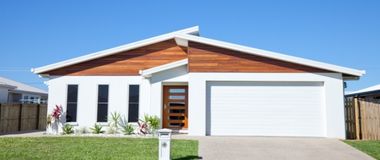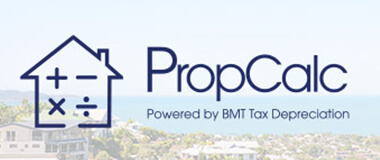Landlord vs homeowners insurance: Key differences every Australian investor should understand

First published 23 April 2025
Investing in residential rental properties can offer significant financial rewards, but it also involves various risks. Obtaining the right insurance coverage is crucial to safeguarding your investment against unexpected events and potential losses.
In this article we will breakdown landlord vs homeowners insurance and which cover is most appropriate to ensure an investment property is fully protected.
Landlord vs homeowners insurance: What’s the difference?
Homeowners insurance protects a homeowner’s primary place of residence against risks such as property damage, theft and liability for injuries occurring on the property. It typically covers the structure of the home, personal belongings inside and legal expenses for accidents involving guests. However, it does not cover tenant-related risks.
Rental property insurance, commonly known as landlord insurance, is tailored for property owners who lease their properties to tenants. It offers coverage for various risks associated with renting out a property, including property damage, loss of rental income and potential liabilities. This type of insurance is designed to safeguard landlords from financial losses stemming from tenant-related issues or unforeseen events.
While property and contents are covered in both policies, the difference between landlord vs homeowner insurance focuses on the needs of each policyholder to offer a distinct and unique type of protection.
Landlord Insurance: This policy offers coverage for additional risks unique to renting out a property. Landlord insurance typically covers:
- Malicious or accidental tenant damage: Protection against damages caused by tenants, whether intentional or accidental.
- Loss of rental income: Compensation for lost rent if the property becomes uninhabitable or if tenants default on payments.
- Tenant eviction costs: Coverage for legal expenses related to evicting tenants who refuse to vacate the property.
- Theft: Protection against theft, especially if caused by tenants or their visitors. It's important to note that landlord insurance policies vary, with some offering more comprehensive coverage than others.
What is homeowners insurance?
Homeowners insurance, on the other hand, is designed for people who live in their property as their primary residence. While it also covers property and contents, it does not provide the necessary protections for rental properties or the risks associated with leasing to tenants.
Typical homeowner insurance policies cover:
- Property damage: Covers damage to the structure of your home from things like fire, theft, or storms.
- Contents coverage: Protects personal belongings within the home.
- Liability protection: Covers incidents that occur on the property, such as a guest being injured in your home.
However, homeowners insurance does not cover the unique risks that landlords face, such as tenant-related damage, loss of rental income or tenant eviction costs. Therefore, homeowners insurance is not suitable for investors who are renting out their property.
Table 1. Comparing depreciation for new vs. old properties
| Coverage aspect | Landlord insurance | Homeowner insurance |
| Building coverage | Protects the physical structure of the rental property against insured events. | Protects the physical structure of the owner-occupied home against insured events. |
| Contents coverage | Covers items provided by the landlord for tenant use (e.g., furniture, appliances). | Covers personal belongings within the home. |
| Loss of rental income | Covers loss of rental income if the property becomes uninhabitable due to an insured event. | Not typically included. |
| Tenant-related risks | Covers tenant-related issues such as malicious or accidental damage, theft, and rent default. | Not applicable. |
| Public liability | Covers legal expenses for incidents occurring on the rental property involving tenants or visitors. | Covers legal expenses for incidents occurring on the property. |
It is important to note that landlord insurance policies can vary, with some providing comprehensive coverage for all the scenarios mentioned, while others may offer more limited protection.
Public liability insurance
Public liability insurance is often included in landlord insurance policies. It covers legal expenses that may arise when an incident occurs on your rental property. For example, if a tenant or visitor is injured on the property and decides to sue, public liability insurance can cover the associated legal costs. Understanding the specifics of your policy ensures comprehensive coverage.
Do I need both homeowners insurance and landlord insurance?
Homeowners insurance won’t cover rental-related risks, so if you're transitioning your property from an owner occupier to a tenanted property, it's important to switch to landlord insurance to ensure you're fully covered. If the property is partially rented out, you typically need landlord insurance for the rented portion, as it covers rental-related risks like tenant liability and loss of rental income.
However, if you still live in part of the property, your homeowners insurance would cover your personal residence and belongings. It's important to ensure both policies are aligned to cover different aspects of the property (personal vs rental).
Three tips for selecting the right landlord insurance
1. Assess your insurance needs
Determine the nature of your rental property, whether it's a short-term holiday rental, long-term lease, shared accommodation, or part of a strata complex. Each scenario presents distinct risks and may require different coverage. Tailoring your insurance to your specific situation ensures adequate protection.
2. Compare policy options thoroughly
Not all insurance policies are created equal. While cost is a factor, it's crucial to understand what each policy covers and excludes. Reading the fine print and consulting with insurance brokers can help you find a policy that offers comprehensive coverage suited to your needs.
3. Accurately estimate your property’s replacement cost
Underestimating the cost to rebuild your property can lead to underinsurance, leaving you financially vulnerable in the event of significant damage. Consider factors such as construction costs, site constraints, demolition expenses, and removal of hazardous materials when calculating the replacement cost. Regularly updating this estimate, especially after renovations or improvements, ensures your coverage remains adequate.
The bottom line
While homeowner insurance might be suitable for those living in their property, it’s not the right option for landlords. As an Australian property investor, you need the added protections that come with landlord insurance, such as coverage for tenant damage, loss of rental income, eviction costs, and public liability insurance. By selecting the right landlord insurance policy, you can safeguard your investment and ensure your property remains a valuable and profitable asset.
Always take the time to understand the differences between landlord vs homeowners insurance and choose the right coverage to suit your unique investment needs.
Consulting with a specialist insurance provider like BMT Insurance can further ensure that you have the best policy in place to protect your rental property. With tailored landlord insurance solutions backed by over 20 years of construction cost data from our in-house quantity surveyors, our experienced team understands the complexities of property investment and works with leading insurers to ensure you’re properly covered for every scenario.
Protect your investment with an expert insurance broker. Call 1300 268 467 or Request a Quote today to find out how we can help safeguard your property.
Connect with us
Stay up to date
Subscribe to receive the latest
BMT news and announcements.





